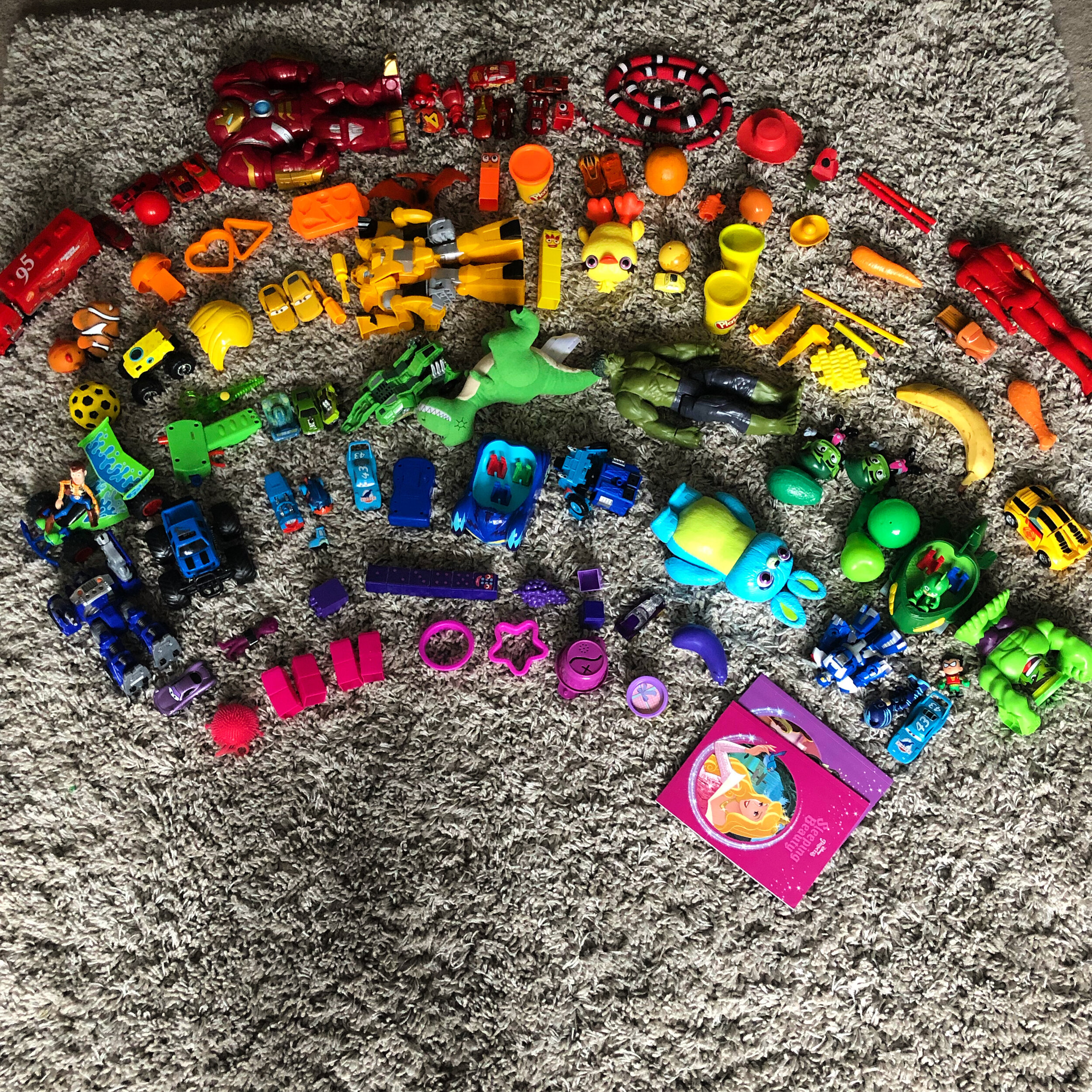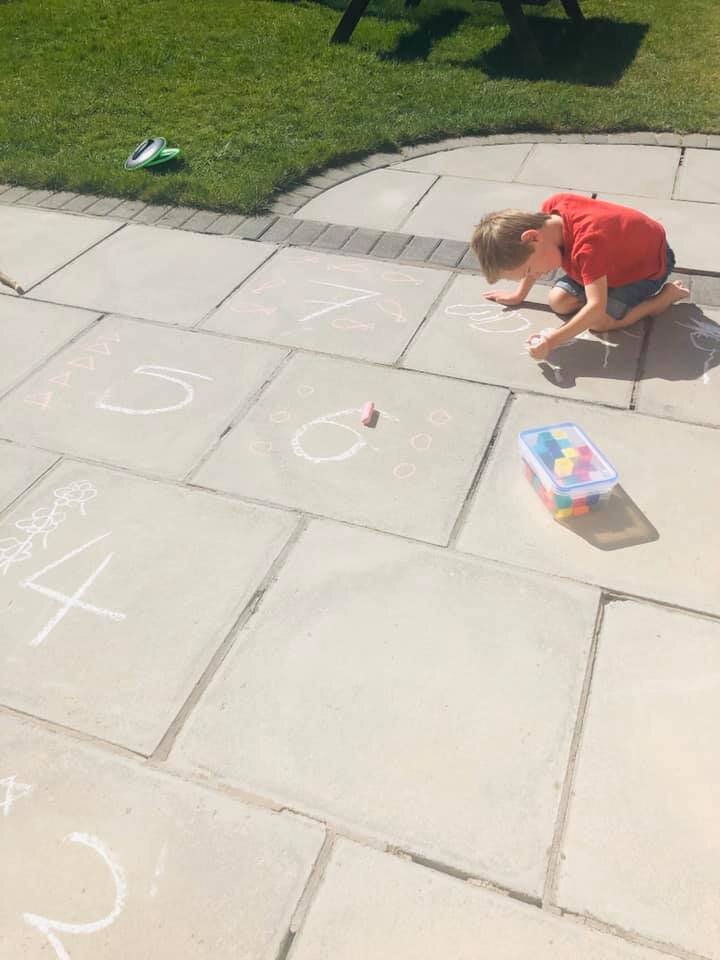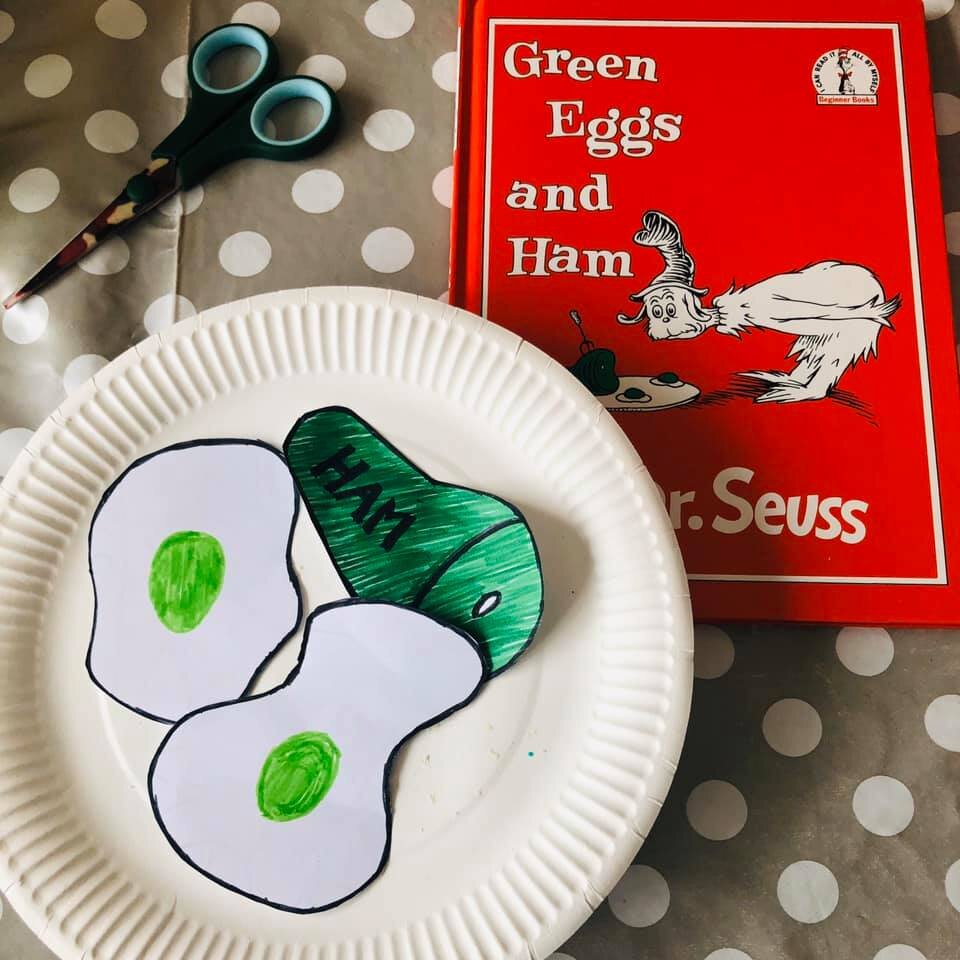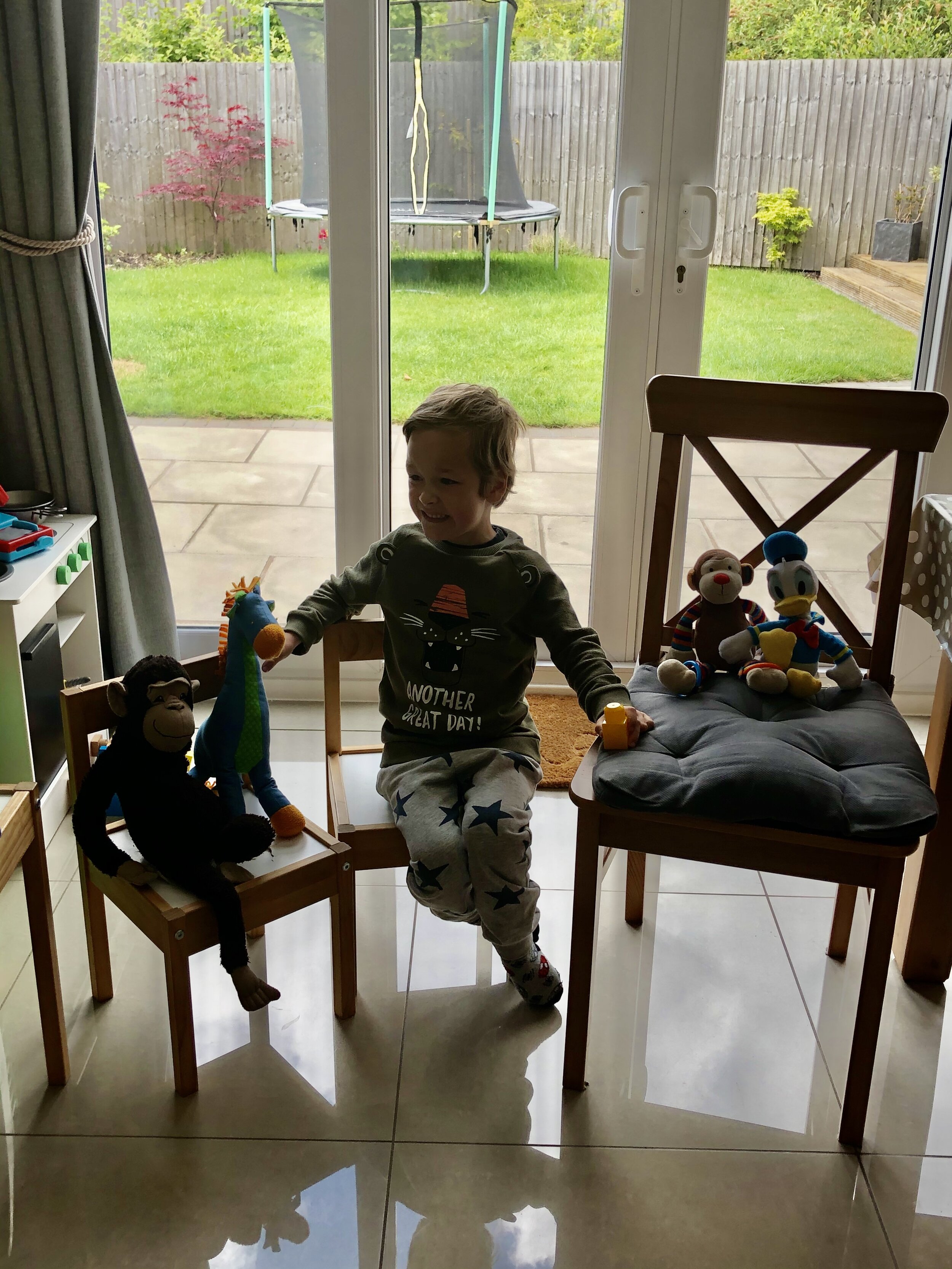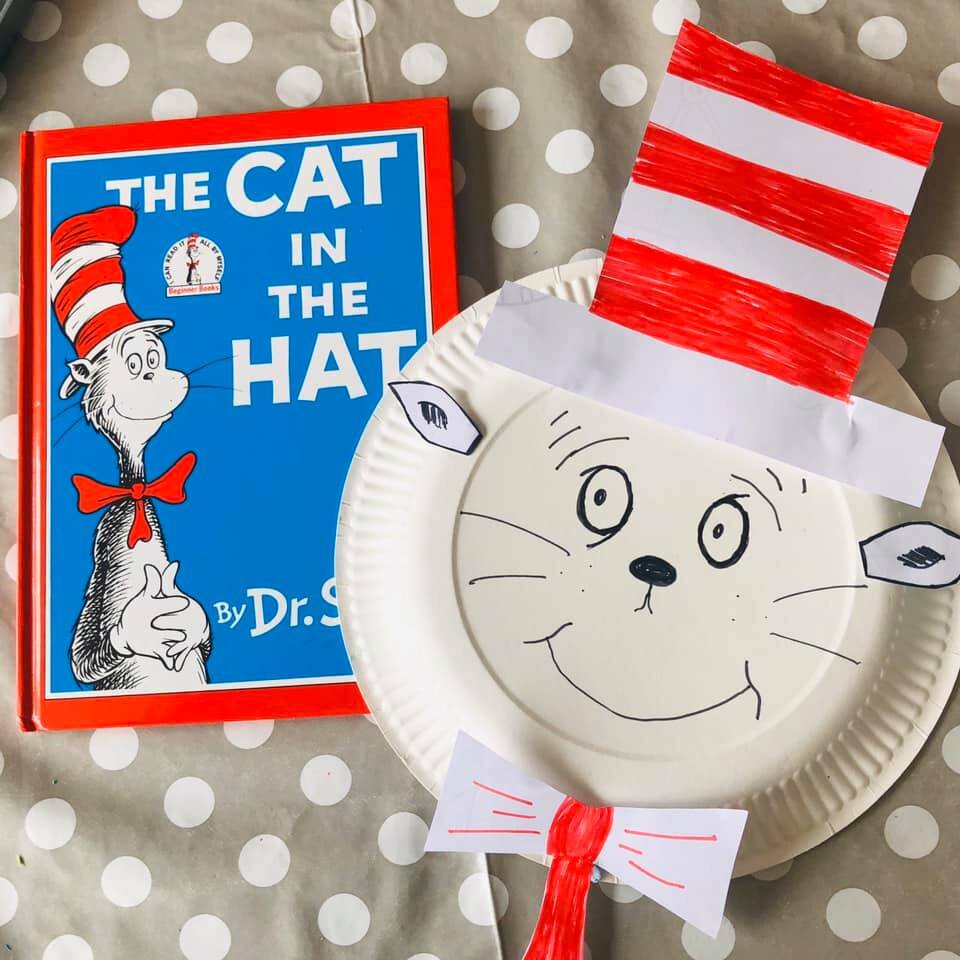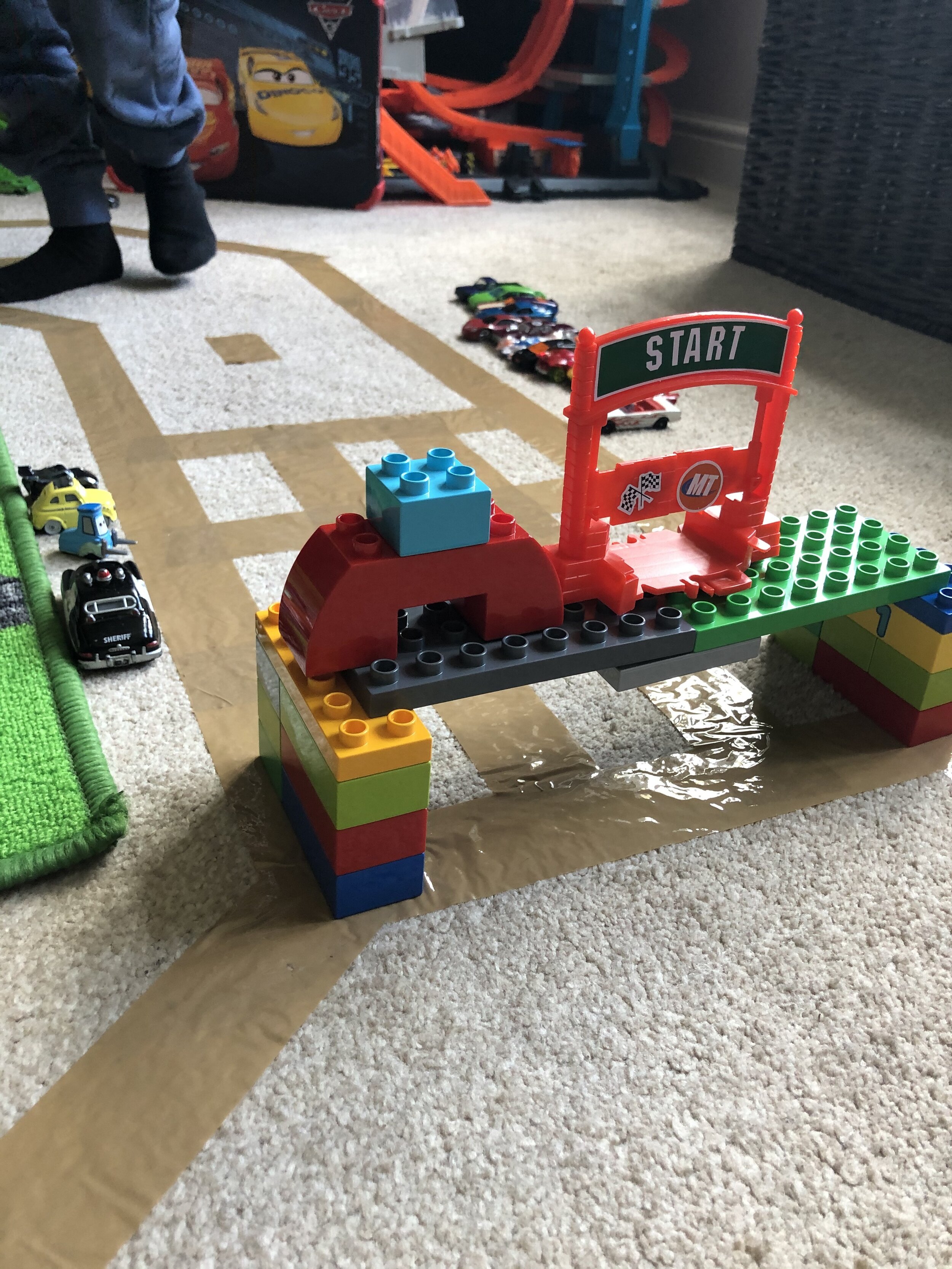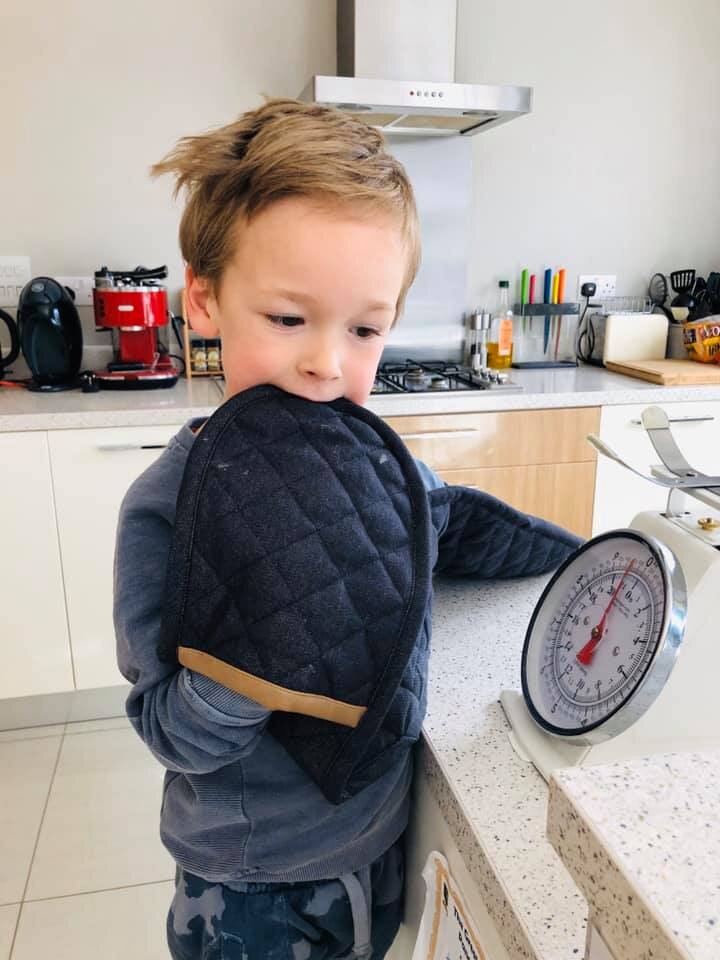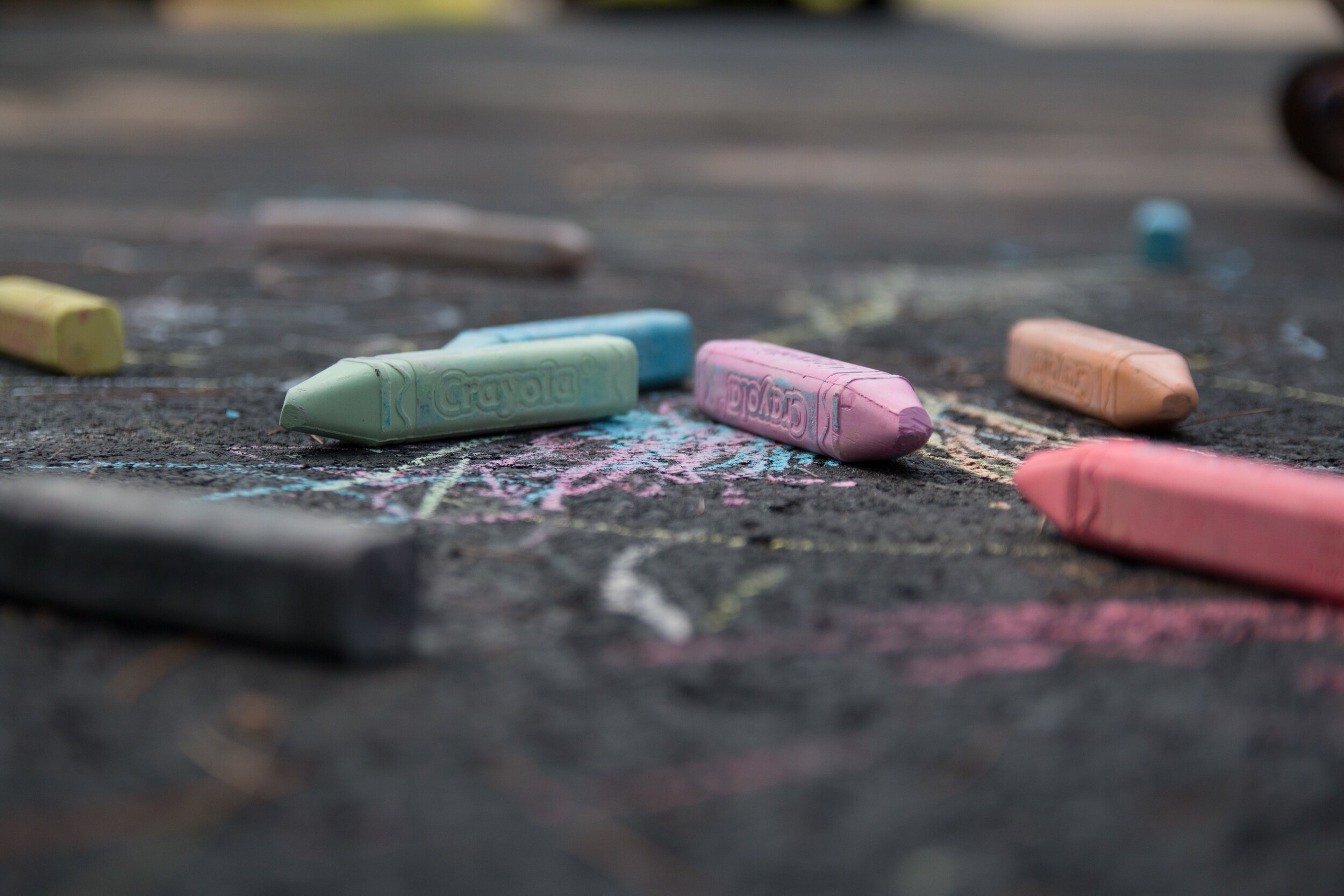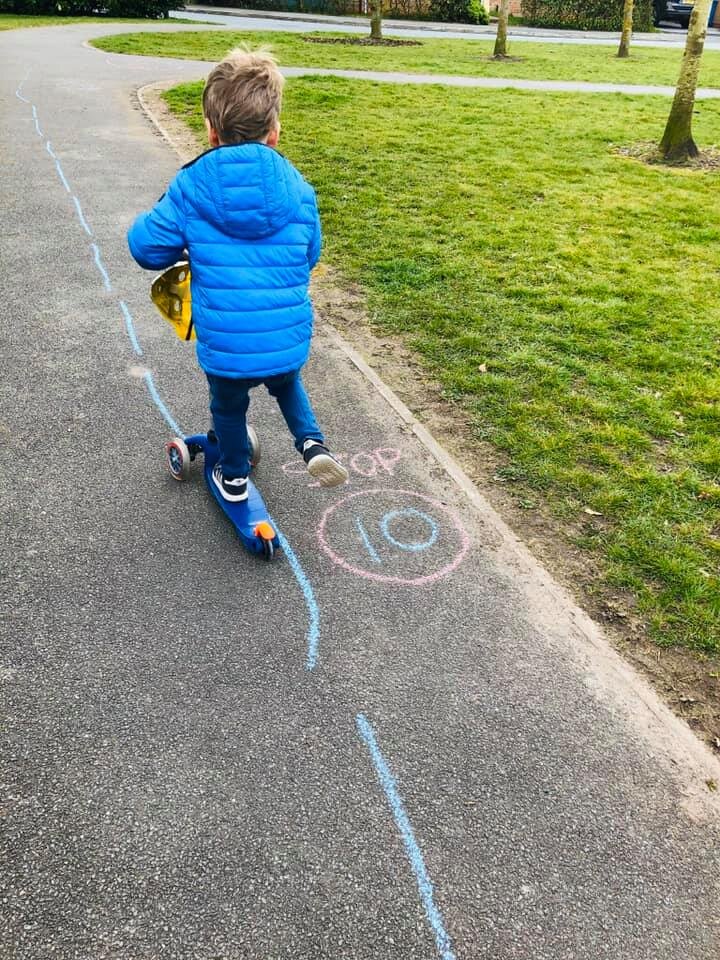21 Creative Ideas For Early Years In Lockdown
Lockdown life
We’re now into week seven of lockdown here in the UK. Can you even believe that?!
Back in mid march when there was first discussion about lockdown, could you even have imagined our lives changing so much, or for so long?
I don’t know what your particular set of circumstances look like or how you are finding this strange period of time, but for me, the experience has been mixed.
Each day of home schooling and home working seems to go slowly and yet the weeks still seem to keep flying by!
There’s been some disappointments such as the loss of our 40th birthdays and family holidays, and some challenges around juggling work commitments and childcare, for sure.
But there’s also been some unexpected gifts too; an invitation to practice a simpler, slower pace of life (I’m just finishing a book about this subject interestingly!), and also lots of extra time with my son whilst he’s still little.
The latter in particular has been good for me - healing even - because it’s time that I always felt robbed of through miscarriage and never getting to have a second maternity leave.!
The challenge is real
There’s been stacks of fun to be had over these weeks; BBQs and pizza making, bike rides and long walks in nature, hot tubs and water fights, Easter egg hunts and VE Day picnics, fire pits, camping out, and staying up late at night.
But despite all of the fun we’ve had together as a family over the past weeks, I’m definitely running out of ideas for entertaining my energetic 5 year old boy now!
As an only child he wants a lot of our attention and is constantly dragging us off to play. He is also on the ASD pathway and tends to have a short attention span for most traditional learning activities like reading and writing too, which means we’re exhausting interest in any work his school sets for him pretty fast. So in short, we’ve had to get creative over these recent weeks!
We’ve tried lots of different things with varying levels of success, but I thought it might helpful to pull some of the best ideas together into a single blog and to make it available to other struggling mums and dads. So here it is: 21 simple creative ideas for early years in lockdown.
All of them are specifically adapted for time-poor parents who are juggling childcare/home schooling alongside their own work like me. They don’t take long to set up, and they don’t need tons of pre-planning or resources to make them happen either!
And finally, feel free to fwd this link onto anyone you know who might find it helpful too…
1. Set a word hunt around your house
If your child is learning phonics and how to read simple words, this is such a simple idea to get them engaged with learning new words in a more visual, interactive way.
Resources: fridge magnet letters (or similar)
How to: Simply hide short words that your child can easily recognise and place them in corresponding locations around your house eg. ‘bin’ on your kitchen bin etc. Once you have set it up, challenge your child to search for the words all around the house and read aloud what each word says.
Tip: Introducing the element of competition by timing it or even incentivise the hunt with a small ‘prize’ to help them to focus. My son managed to get through about 18 before he got bored!
2. Plan an indoor treasure hunt
There's all sorts of fun to be had indoors with a simple treasure hunt, just using items already around you.
Resources: Paper and pen.
How to: Give each child a simple list showing 10 objects they have to find. Try to use simple words they can read themselves (or you can help) eg. a car, a pen, a brick, a coin - you get the picture. It’s a great way to practice reading, and also builds initiative and problem-solving skills.
Tip: If you’re looking for an extra challenge, why not create a colour theme too? eg Find ten objects that are yellow and then arrange them on a table. Or if you’re feeling ambitious, you could even create a full rainbow like the one we made below.
3. Make some box friends
After two birthdays in one week we had a lot of empty Amazon boxes sat in our recycling bin, so we decided to make them into box trolls and robot friends one afternoon. It was a great way to unleash some creativity!
Resources: Old boxes, plain paper, felt tips or paint
How to: Tape any broken down boxes back together, or if you don’t have any boxes, toilet roll tubes could work too. Then cover one side with plain paper and get your child to draw on faces and colour or paint them. We also used some sticks that we found on a woodland walk to make some holes in the sides too.
Tip: If your child is as happy with his new ‘friends’ as my son was, why not get them all to sit round while you read the ‘class’ a story? It could even be a robot themed one!
4. Sorting out sizes & colours
Does your child have a certain toy collection they are really interested in - perhaps some dinosaurs or toy cars? My son has endless temporary fixations with different things, so this is a really great one for him.
Resources: Just use the toys or objects you already have in your own home.
How to: Ask your child to get out some of their toy cars, transformers, dolls or lego pieces. Then get them to sort them into order of size from biggest to smallest, and/or group them into different colours or materials. Its a great way to develop understanding around concepts such as size, shade, and textures.
Tip: Try to have some conversations about which ones are bigger/smaller, darker/lighter, harder/softer, rough/smooth, the same/different colours.
5. Try hand painting or potato prints
On the subject of painting, my son is never interested in painting, drawing or colouring in for very long. I tend to spend more time setting creative play activities up and clearing them away. But hand painting was a totally different thing ! It kept him entertained for ages…
Resources: poster paint (washable), paint tray, plain paper, paint apron
How to: Put some paint in trays/pallets, and line the kitchen table or floor with paper (old wall paper rolls would also work well). Let your child experiment with the paint brush and paint their fingers, hands, or even feet (if you’re feeling brave!). Don’t worry too much if they mix up all the colours. Let them just enjoy the feel of the paint on their skin and making prints on the page.
Tip: If you don’t want your child to paint themselves or a sibling, you could also try carving some potato or apples for printing instead …
6. Words & numbers hop-scotch
This is an easy re-boot of a classic children’s game we all know and loved playing as kids, and a great way to improve recognition of numbers, simple words and practice basic adding or subtraction.
Resources: Chalks
How to: Draw a hopscotch board on your patio or drive way with numbers 1-12 (or you could go higher if you’re feeling ambitious). Then discuss with your child what they would like to draw alongside each number eg. 1 star, 2 flowers, 3 balls etc and practice counting with them.
Tip: Once its completed, you can also get them to use the hop scotch board to add and subtract simple sums by hopping over them.
7. Story crafting
I totally stole this idea from a friend. But if you struggle to get your child to sit down and enjoy a story time, this might really help.
Resources: Coloured card or paper plates, colouring pencils/felt tips, scissors
How to: Pick one of your child’s favourite story books. Make some simple illustration props from the book with your kids - and then read it aloud together. We chose Dr Seuss’ Green Eggs and Ham. But you could choose, No-Bot, Stickman, The Gruffalo, superheroes, or something else. Almost any story would work! And for extra fun, why not let your child bring a few of their other toy friends to join in story time as well?
Tip: This is an activity you can recycle again and again, using a different book every time. It really helps to bring the stories alive!
8. Make a den
Sometimes its so easy to feel like you have to schedule every minute of play, but most parents can remember enjoying den building as a child, usually with nothing more than a bit of creative thinking, imagination and role play.
Resources: A spare sheet or blanket.
How to: Use some sofa cushions and a spare sheet if you’re indoors, or if you’re outside you could use a washing line, picnic bench or table.
Tip: Once the den is built, let your child invite their favourite toys to join them in their den and furnish them with some simple snacks. Then let their imagination run wild!
9. Playdoh friends
I know, I know… playdoh is every parent’s nightmare because the bits get everywhere. But if you can get past the mess (do it outdoors?) it’s always worth it because it’s a tactile activity that every child loves. And just try not to be too OCD about all the colours mixing like me!
Resources: Playdoh and cutters
How to: Find some book or TV characters that your child really likes, such as the Disney characters or Mr Men and try modelling them with playdoh together. You could even create a whole group of characters or model out a whole scene. But get the book out to copy the pictures as its almost impossible to do this from memory.
Tip: If you haven't got any Play-Doh it's also pretty simple to make your own.
All you need is:
2 cups of plain flour
1 cup of salt
1 tablespoon of oil
half to 1 cup of cold water
2 drops of liquid food colouring
Mix the flour and salt then add the water, oil and food colouring. Knead the mixture well, adding a little more flour if the consistency is too wet.
10. Draw or craft a rainbow
The rainbow has become such a symbol of solidarity and hope in recent weeks, that its hard to imagine that any child hasn’t done this activity yet, but I couldn’t not include it (just in case!) because its such a good way to learn about colours and practice cutting, drawing and craft.
Resources: Sheet of paper or card (a4 or bigger), scissors, crete paper, felt tips or paint - you can use whatever you like!
How to: Draw a rainbow and get your child to decorate it - this could be with coloured paper pieces to glue on, felt tip or paint. Use it as an opportunity to encourage them to remember/discuss all of the colours in a rainbow. You could cut it into an arch shape afterwards (optional). Stick it up in your front window or on your front door for others to see.
Tip: Afterwards, go on a little walk around your neighbourhood to see how many more rainbows you can spot. If you live in a family-friendly street or neighbourhood, chances are that there’ll be quite a few!
11. Go on a nature trail
If you’re able to go outside and have any nearby natural spaces such as a field, park or woodland trail, this is a perfect activity to try
Resources: Paper & pen
How to: Make a list of simple items you are likely to see on a short nature walk. A big stick, a flat stone, a leaf, a yellow flower etc. Give your child a bag to collect it all in. If you are going slightly further you could combine this with a bike or scooter ride too. It’s a great way to learn about nature, and get some physical activity at the same time.
Tip: You could also use the collected items to make a nature picture back at home afterwards. Or if you have a child who’s interested in bugs like my son, you could take a bug catcher along with you too.
12 . Try camping in your back garden
Like us, do you have a pile of camping gear that never gets used? Honestly, we tend to holiday abroad, but with no flights on the horizon this year and some good early spring weather, we decided to create some camping memories in our own back garden.
Resources: Tent, sleeping bags, BBQ
How to: Clear some space in your garden, dig the sleeping bags out of the loft, and have some fun putting up a tent with your kids for them to sleep in. You could plan a BBQ and make a campfire outside as well to help create that full camping experience. Although this is not strictly ‘educational’, it was great for family bonding and was an experience that our son will be talking about for weeks!
Tip: You might want to choose a weekend night to do this - just in case the excitement means that it takes a while for everyone to get to sleep!
13. Grow your own plants or veg
Planting seeds is a great hands-on way to learn about nature, where food comes from, and the environment.
Resources: Seeds, compost, small plant pots
How to: We’ve just planted some herbs and some sunflower seeds in pots in our garden. Sunflowers are a great option for younger children as they tend to grow quite fast, and they can practice watering them daily. But you could try growing any sort of fruit or veg at all. Not only will your kids be excited to watch them grow, but it might eventually save you some trips to the shop too.
Tip: Lots of retailers such as Amazon sell simple seed kits to get you started online.
14. Build a giant race track
If like me, you have a son who is really into cars, this idea will work a treat. It takes a bit more time to construct, but once it’s up it will keep your child entertained for hours…
Resources: Floor space, masking tape, or train set, magic tracks, lego bricks etc
How to: Dig out all of your tracks, race courses, and toy cars and build the longest race track that you can. If you don’t have anything like magic tracks, why not just use masking tape to make a long track on the floor? Then set some races: The Batman car vs Spiderman, Thomas the Tank vs Blaze, Lightning McQueen vs RC from Toy Story- the options are endless!
Tip: If you want to go even further, why not set a bridge building task? You could make them out of duplo blocks, lego pieces, or even toilet rolls! Anything that involves building or connecting pieces is great for improving those fine motor skills.
15. Plan a teddy bear’s tea party or picnic
If your child is fussy about eating or doesn’t want to stop playing to eat a meal, why not try turning lunchtime into part of their play? Again, this is not a new idea… but sometimes the oldest really are the best!
Resources: Picnic blanket, dolls / teddies / superheroes, picnic food
How to: Set up a picnic blanket and get you child to choose all of their favourite toy friends - dolls, teddies, or as in my son’s case -superheroes, transformers and dinosaurs. Let your child help you lay out plastic picnic plates and cups for everyone. Then serve up some sandwiches and snacks. If you want to, you could get your child to help you prepare the food too.
Tip: You can do this in the garden if the weather is nice, but also indoors on a rainy day too.
16. Create a hunt for other children
If you struggle to get your child engaged in craft activities, making a simple trail for other children and families in your neighbourhood might be just the thing. It really can be a win-win!
Resources: Coloured card, scissors, scissors, hole punch
How to: Draw some shapes on card such as stars or love hearts (about 20 should be enough), then get your child to cut them out. Punch some holes and thread onto a small piece of string. Afterwards go for a walk around your neighbourhood and plant them around for other children to find. You could add a kind message or bible verse onto each one as an extra gesture. Or you could set a challenge to see how many people can count.
Tip: If you have a neighbourhood facebook page, what’s app group, or similar, this could be a useful way of letting other people in your community know that your trail is there
17. Try some baking
Maybe the idea of baking with a child that has attention-deficit seems like a pretty thankless task, but there are a few tried and tested recipes I’ve found that are quick and simple enough to keep my son’s attention such as flap jack, or banana bread, which he loves making.
Resources: Recipe* for banana bread, cake tin, grease proof paper, 2 x over-ripe bananas, caster sugar, flour, butter, baking powder, eggs, vanilla essence.
How to: Set out a greased tin and measure out all of the ingredients beforehand, then get your child involved with mashing the over ripe bananas, mixing the ingredients together, and of course the tasting of the mix! You could set some school work or reading for them to do with you whilst it bakes, then when it is ready to eat you can use it as a reward.
Tip: If your child still really struggles to keep any interest, why not start by using ready made cake mix or cookie dough which they can just help you mix together, and then decorate once it is baked?
*BBC Good Food has some really easy recipes if you don’t have one.
18. Maths with basic kitchen cupboard items
One school subject that my son does enjoy is maths, and he has really got basic adding up figured out now but still couldn’t get his read round subtraction. So we used simple food items to help explain the concepts more visually
Resources: Tinned food
How to: Lay out some tins on your kitchen table, and then use them to illustrate basic sums. For example, if we had five tins on the table, and I take three away, how many are now left? Get them to count the tins, and physically move them around, to figure out the answers. Then let them practice some sums themselves.
Tip: If you don’t have many tins in your cupboard, you could also do it with lego pieces, bathroom toys, or something else that interests them.
19. Create an obstacle course
Another easy game to try at home is to create an obstacle course in your garden using whatever you happen to have lying around. It’s a great way of squeezing in some physical activity and practising things like coordination and balance to help improve those gross motor skills.
Resources: Just use whatever you have!
How to: Set up an obstacle course around the garden using different activities. This could incorporate anything from slides, to hop scotch, shooting balls in nets, crawling through tunnels, hula hoops, walking along ropes, hopping on the spot or anything at all. Once you’ve set it up, let your child run wild!
Tip: You could also add an element of timing them with a stop watch to see how quick they can complete the course.
20. Plant a time capsule
Most small children won’t understand the magnitude of what they are experiencing right now, or how historic what we are experiencing really is, but making a time capsule to store away and open in years to come, is a brilliant way to pass some time, and store some memories too!
Resources: Box or plastic container, memorabilia, tape/string
How to: Collect some pieces of memorabilia (you could do this over several days, then place it all into a container. Seal it up with tape or string, then store it somewhere safe like in the attic or basement. You could even bury it in your garden (but seal it in a black bin liner to keep it safe first).
Tip: A few ideas for things to include are: a picture your child has drawn, note from each family member saying how they feel, recent photos, a painted pebble with the date on, a current newspaper, your child’s foot or hand print (to see how they grow), or a stamp or coin dated from 2020.
21. Chalk challenges
Another really simple variation on the last idea is to set up some games using chalk. This is especially handy if you If you don’t have much garden space, as you can you use a driveway, paving area, or even a space in a local park.
Resources: Chalk
How to: Plan an assault course on paper at home first, then go out on chalk it up larger scale. Each section could include instruction words eg jump, hop, skip, do push ups etc. Or if an assault course is a bit too complicated for your child, another alternative is chalking up a race track with number markers instead.
Tip: If you do this in a public area, there’s the added benefit that other children in your neighbourhood might be able to use it afterwards too.






